Hurricanes, cyclones and typhoons are giant, spiralling storms with winds topping 119 kilometers per hour. They’ve been known to reach diameters exceeding 1,000 kilometres. The winds of a single hurricane
can generate half as much energy as the electrical generating capacity of the whole world.
Hurricanes, cyclones and typhoons are similar weather phenomena—except for where in the oceans they form.
Hurricanes develop over the North Atlantic, and over parts of the North Pacific.
Typhoons grow in the Northwest Pacific.
Cyclones form over the South Pacific and Indian Ocean.
The storms build, gaining strength, size and speed as they move toward land. They claim lives, destroy livelihoods, devastate communities and pulverize infrastructure. “Anyone who says they're not afraid … of a hurricane is either a fool or a liar, or a little bit of both,” says journalist Anderson Cooper, who covered Hurricane Katrina in the U.S.
On an individual level, the losses can be shattering. These storms can take away everything a family has spent a lifetime working to build. They cause the greatest long-term impact in the world’s poorest regions, often
reversing years of development gains.
Worse, the intensity of hurricanes and tropical storms may increase in years to come. Climate change, extreme weather patterns, warming oceans and rising sea levels threaten to play a role. People in developing countries will suffer disproportionately.
In this article, you’ll learn how hurricanes and tropical storms form and travel. We’ll explain why the impact is greater in the world’s poorer regions. We’ll share how groups like World Vision help families prepare for storm disasters. And we’ll tell you how you can help.
- How do hurricanes and tropical storms form?
- How do we choose a name for each hurricane and tropical storm?
- What were some infamous hurricanes and tropical storms?
- How does climate change impact hurricanes, cyclones and typhoons?
- Why do impoverished countries suffer disproportionately in these major storms?
- How does World Vision help people face hurricanes and tropical storms?
Hurricanes and tropical storms form over the ocean, in places where air pressure is low. When rain showers and thunderstorms start circling around that low pressure area, that area becomes a ‘tropical depression’
with wind speed of up to 63 kilometres per hour.
If the ocean water is at least 26 degrees Celsius, the whirling winds can grow more organized. Maximum gusts can increase to 117 kilometres per hour. The low-pressure area continues to suck up damp, hot air. The spiral gets stronger and faster. At this point, we’re dealing with full-fledged hurricanes, cyclones or typhoons.
In general, hurricanes and tropical storms are steered around the world by global winds. You can track these wind patterns, and the movements of spiralling storms,
on sites like this one.
Colliding with the land
By now, the storm is ruthless, caring nothing for the continents in its path. As it approaches, coastal communities are the most vulnerable of all.
A hurricane or tropical storm hurtling toward a coast can raise sea levels by
up to 9 meters, as winds shove ocean water toward the land. These massive waves flood low-lying areas. They destroy coastal structures. They destroy boats and shove them far onto the shore.
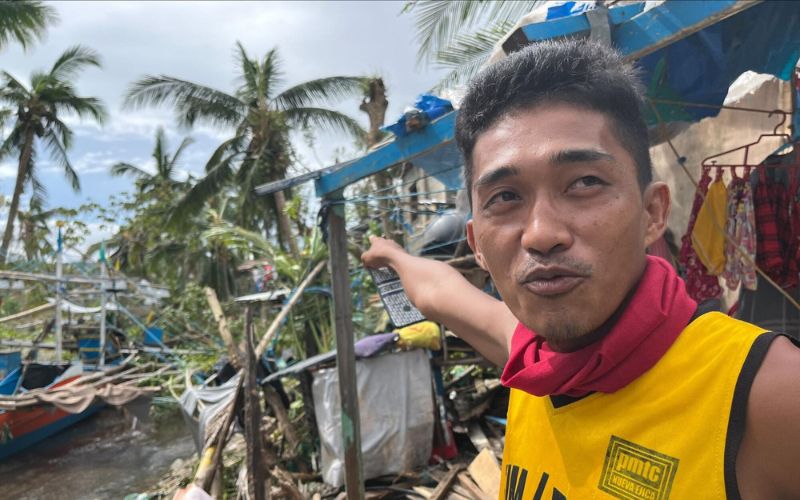 “Most boats have been damaged and will need repair,” says Leo, a fisherman in the Philippines, after Typhoon Noru (local name Karding) passed through his coastal community. Livelihoods in this area are moored directly to the boats. Photo: Gjeff Lamigo
“Most boats have been damaged and will need repair,” says Leo, a fisherman in the Philippines, after Typhoon Noru (local name Karding) passed through his coastal community. Livelihoods in this area are moored directly to the boats. Photo: Gjeff Lamigo
2. How do we choose a name for each hurricane and tropical storm?
The World Meteorological Organization (WMO) has lists of names from which they draw. They assign one while a storm is building, well before it makes landfall. Hurricanes, for instance, are named while still over the Atlantic Ocean, once they reach
sustained wind speeds of 63 kilometres per hour.
The WMO maintains these alphabetized lists of names, agreed upon and updated at annual global meetings. They move through them methodically, alternating between male and female handles.
Storms with multiple names
Some hurricanes and tropical storms travel for more than a week, striking several global regions. Local forecasters re-name a storm as it passes through their area, drawing from their own regional lists of approved names.
Why do some storms need more than one name? So that people in every part of the world can communicate clearly about the oncoming disaster. ‘Ashley’ may work great for many people in North America. But it’s neither familiar nor pronounceable in other parts of the world.
It’s essential that everyone—forecasters, ship captains, emergency response teams and community members speaking different dialects—find the name easy to use. That’s helpful when groups like World Vision refer to the storm, when assisting people to prepare for future disasters.
3. What were some infamous hurricanes and tropical storms?
‘Infamous’ storms occupy a unique place in history, to the extent that the World Meteorological Organization has removed their names from master lists. These storms were just too devastating, too painful, to use their names again.
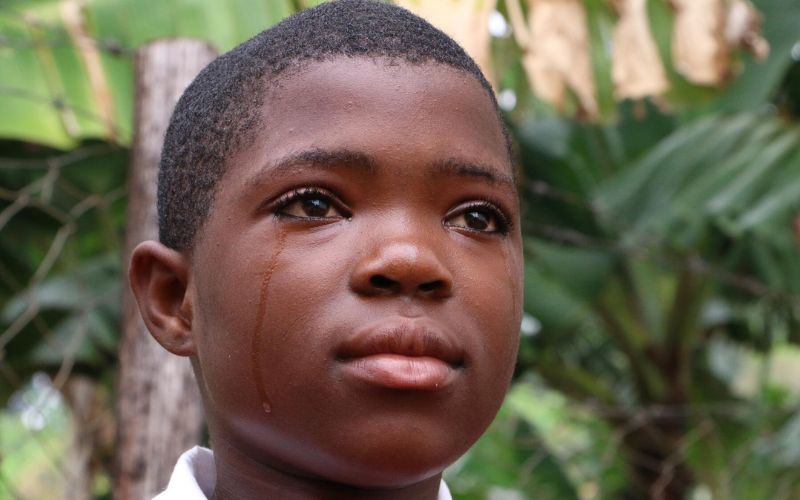 "I wish Cyclone Idai had only destroyed buildings and not killed people,” says 11-year-old Ayanda in Zimbabwe. “I pray that we find a way of forgetting the pain." Photo: World Vision Zimbabwe
"I wish Cyclone Idai had only destroyed buildings and not killed people,” says 11-year-old Ayanda in Zimbabwe. “I pray that we find a way of forgetting the pain." Photo: World Vision Zimbabwe
Here are some of the world’s most infamous hurricanes, cyclones and typhoons:
- Cyclone Idai (Malawi, Mozambique, Zimbabwe, 2019) and Cyclone Kenneth (Mozambique, six weeks later)
- Super Typhoon Mangkhut (the Philippines, China, Hong Kong, 2018)
- Hurricanes Irma and Maria (the Caribbean, 2017)
- Haiyan/local name Yolanda (the Philippines, 2013)
- Hurricane/Superstorm Sandy (USA, 2012)
- Hurricane Katrina (USA, 2005)
- Hurricane Mitch (Honduras and Nicaragua, 1998)
- Cyclone Tracy (Australia, 1974).
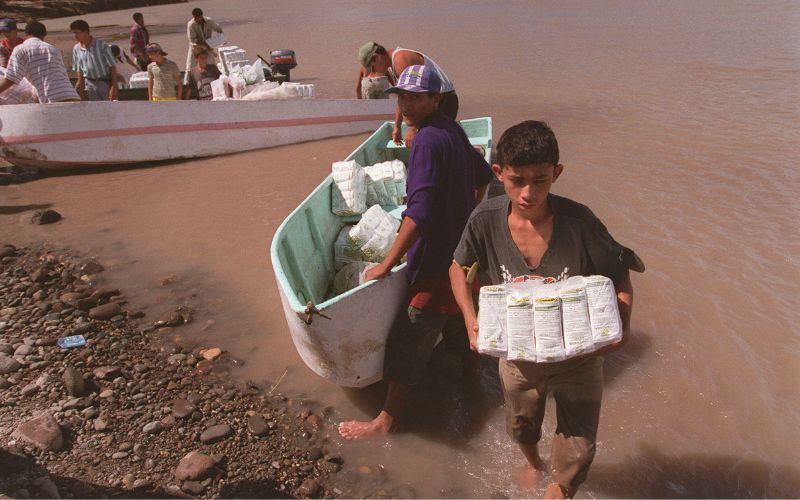 This historical photo shows people in Nicaragua transporting provisions across a river they would normally have crossed by bridge. Hurricane Mitch (1998) destroyed 63 bridges there, separating thousands from food sources and emergency medical care. Photo: Jon Warren
This historical photo shows people in Nicaragua transporting provisions across a river they would normally have crossed by bridge. Hurricane Mitch (1998) destroyed 63 bridges there, separating thousands from food sources and emergency medical care. Photo: Jon Warren
4. How does climate change impact hurricanes, cyclones and typhoons?
There’s no definitive answer to that question yet. These kinds of storms are
tough for climatologists to study. They are rare and unpredictable. Data has been notoriously difficult to obtain and is often contradictory.
Detecting an
increase in the severity of these storms is easier than establishing
an increase in their frequency. Scientists have noted, for instance, that in the North Atlantic,
hurricane incidence has actually decreased since the 1970s.
When it comes to the
severity, however, many scientists agree that
certain hypotheses are worth pursuing. For example:
5. Why do impoverished countries suffer disproportionately in these major storms?
Typically,
hurricanes headed for Canada have been downgraded to post-tropical storms by the time they make landfall. They are no longer driven by warm ocean temperatures, but by northern weather systems.
But major storms
make landfall with greater intensity in warmer regions. Climatologists suspect it's because of the warmer ocean waters surrounding the land.
Here are other examples of people in impoverished regions suffering disproportionately:
- Human mortality in the world’s vulnerable regions was 15 times higher between 2010 and 2020 than it was in areas with lower vulnerability (e.g., Canada). This was partly due to storms and floods. These lead to injury, waterborne illness, exposure and malnutrition. The destruction of infrastructure such as health clinics worsens matters.
- Impoverished countries may have thousands of people living in informal tented settlements when a storm hits. Families are unprotected when faced with hurricanes, cyclones and typhoons.
- Building codes in impoverished regions can be substandard or non-existent. Often, governments fail to enforce those which do exist. This means that powerful storms can flatten buildings and destroy infrastructure in greater magnitude than in Canada.
- Impoverished countries struggle to rally economically after a hurricane or tropical storm. “In just a few days, the country can lose more than the income of an entire year,” says the World Bank. The situation worsens as governments borrow money to remain solvent.
- Hurricanes and tropical storms can cause decades’ worth of setback in critical development. This happened in Honduras and Nicaragua as the result of Hurricane Mitch in 1998.
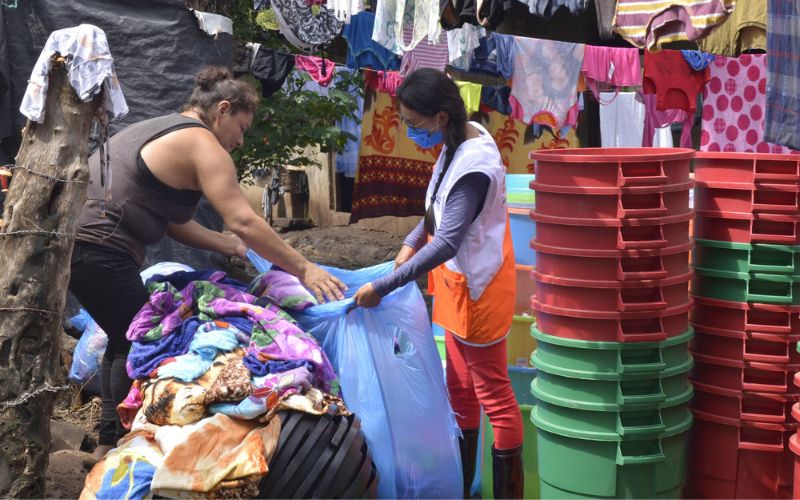 World Vision staff in Nicaragua distribute essentials following Hurricane Eta in 2020. The country’s economy still hasn’t recovered from the effects of Hurricane Mitch in 1998. Photo: Heydi Ortega Orozco
World Vision staff in Nicaragua distribute essentials following Hurricane Eta in 2020. The country’s economy still hasn’t recovered from the effects of Hurricane Mitch in 1998. Photo: Heydi Ortega Orozco
6. How does World Vision help people face hurricanes and tropical storms?
We help children and families prepare for major storms before they strike vulnerable communities. We monitor signals and indicators of emerging natural disasters such as typhoons, cyclones and flooding.
- We help communities form local disaster risk committees, supported by World Vision facilitators who communicate with the group.
- We provide kits with items such as hand-held radios, megaphones, life jackets, high-visibility vests, hard hats, life buoy rings, solar batteries and flood gauges.
- We pre-position life-saving essentials such as food, bottled water, medical supplies and shelter supplies in regions around the world. When disaster strikes, we are quick to the scene to help save lives.
- We remain in communities for months or years after the storm strikes, helping people rebuild and train for new livelihoods if needed.
Long-term support
Our disaster response supports local World Vision teams already working in the area. We stand by communities in the medium and long-term, to help them rebuild and recover.
In cases of natural disasters like hurricanes and tropical storms:
- World Vision’s Global Rapid Response Teams of emergency management experts head to the region within hours.
- We assess the scope and scale of storm impact, including how many people are affected and the extent of the damage.
- We partner with local governments and aid agencies to address the needs.
- We align with world bodies such as the United Nations to deliver assistance quickly and efficiently.
- We work with these partners to find the most effective long-term response.
Meanwhile, back in Canada, World Vision may appeal to people across the country to raise funds for overseas crisis response. We might do this in partnership with other agencies e.g.,
through the Humanitarian Coalition. We secure grants from the Canadian government.
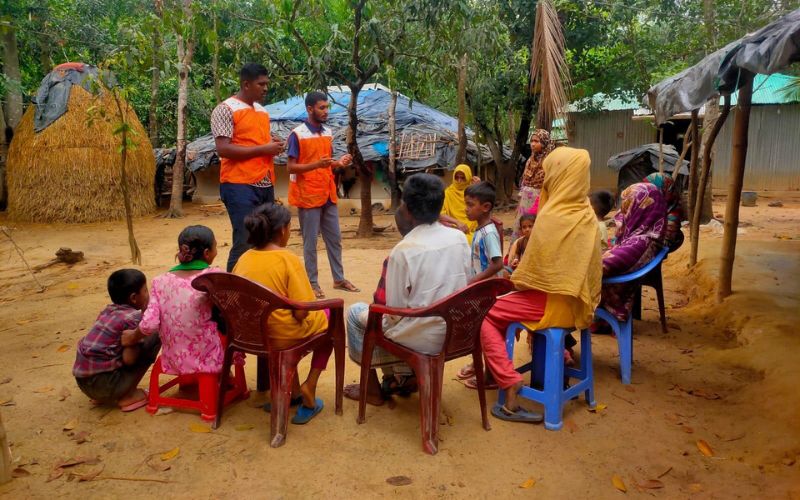 In Bangladesh, World Vision staff prepared people in Cox’s Bazar for the onslaught of Hurricane Mocha. We worked with leaders and families to stabilize shelters, latrines and water sources. Photo: World Vision Bangladesh
How can I help?
In Bangladesh, World Vision staff prepared people in Cox’s Bazar for the onslaught of Hurricane Mocha. We worked with leaders and families to stabilize shelters, latrines and water sources. Photo: World Vision Bangladesh
How can I help?
Thanks so much for asking! Please
visit our Support Emergency Response page to help, through a donation.